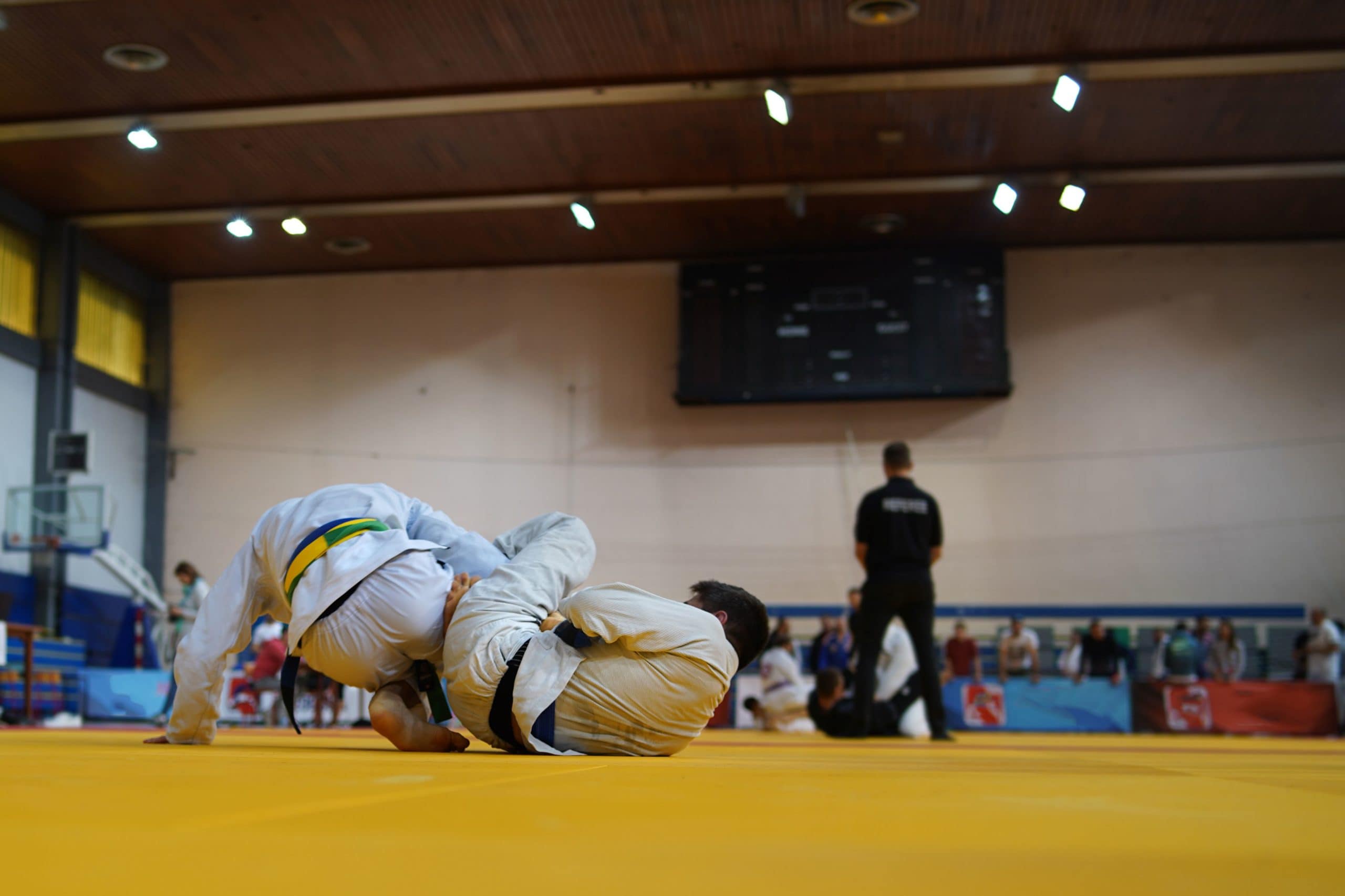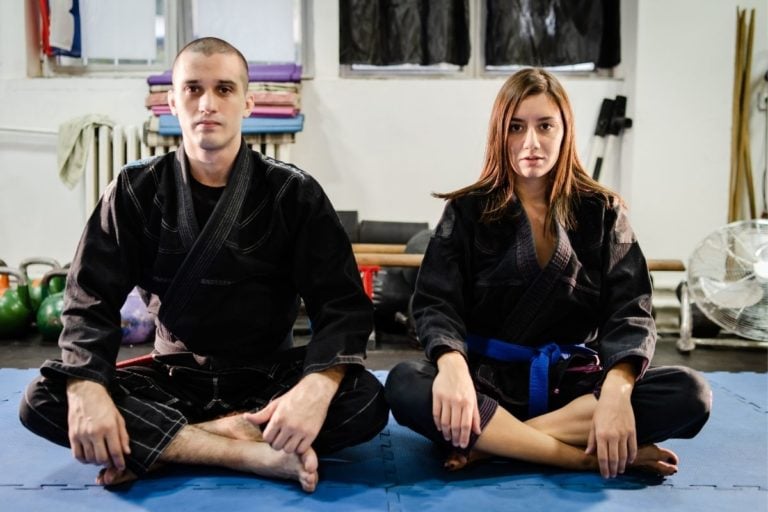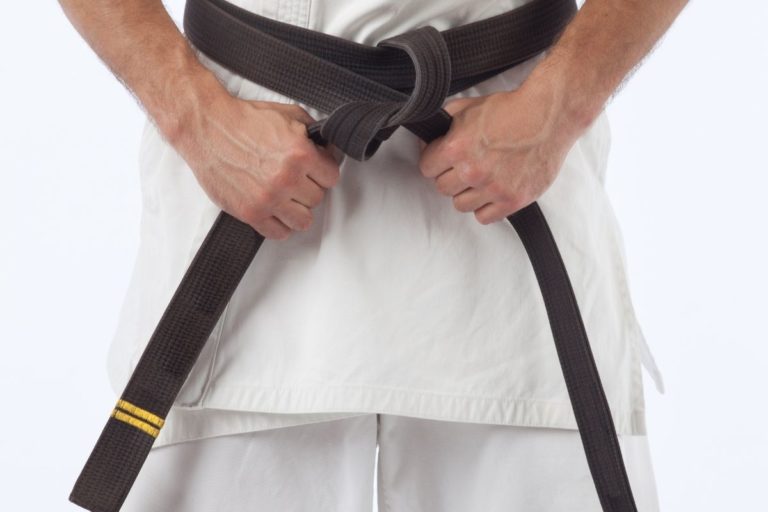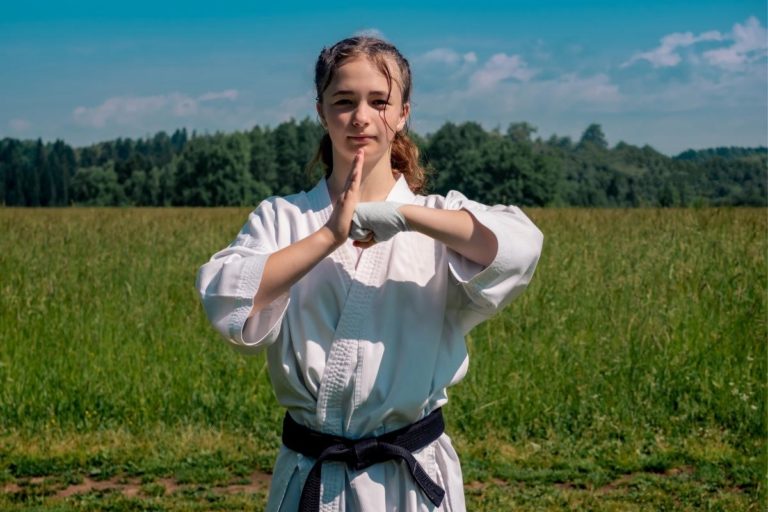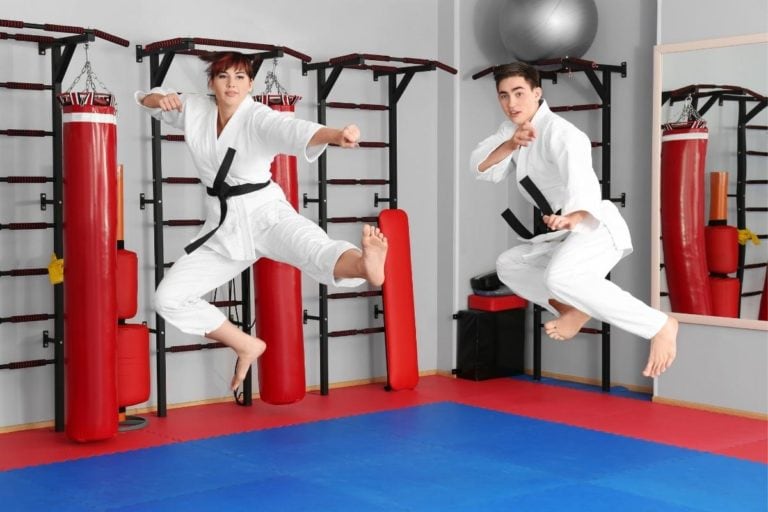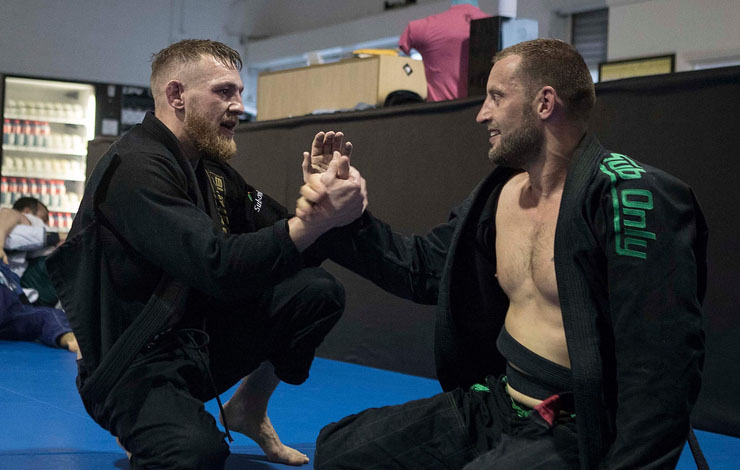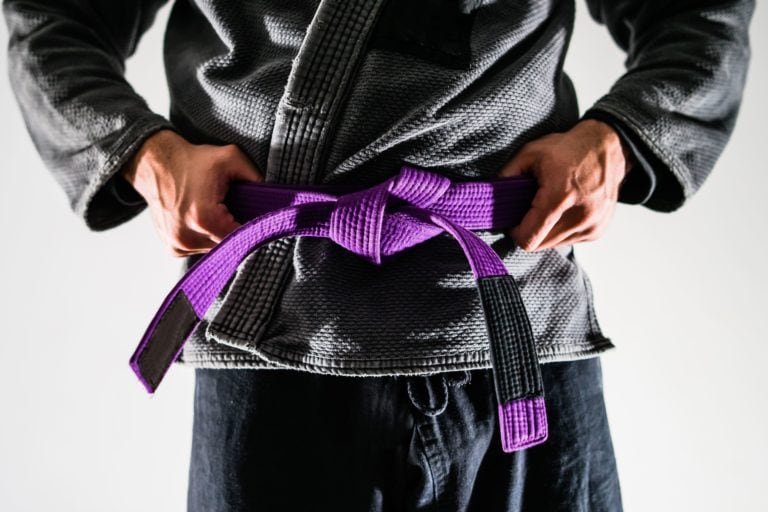BJJ Weight Classes Explained
Although, BJJ was created to equip smaller people with the ability to defeat larger opponents, BJJ competitors are divided into weight classes, as in most combat sports. That is to say, you should anticipate to compete against other competitors of comparable size and strength most of the time.
When compared to other contact sports, the weight divisions in BJJ are somewhat different. There are two options for novices: GI and No GI. For men, there are also master and adult categories. Women and juveniles are separated into different categories.
This article will explain the various weight classes in BJJ competitions and assist you in selecting the appropriate weight class. Bare in mind that organizations have different rules and weight categories, such as the International Brazilian Jiu Jitsu Federation (IBJJF) and Abu Dhabi Combat Club (ADCC), among others.
Weight Classes in BJJ
As previously mentioned, there are various organizations that utilize their own weight classes and rules. In order to make this article simple, we discuss the rules and weight classes of two of the most prestige BJJ competition organizations, the International Brazilian Jiu Jitsu Federation (IBJJF) and Abu Dhabi Combat Club (ADCC).
No Gi & Gi
Before we start discussing the weight classes, you should be aware that there are two sorts of BJJ events in which you can compete. The first is Gi, and the second is No GI.
When you weigh-in, you’ll put on a Gi, and you’ll only get one chance to do so. If you do not make weight, you are immediately disqualified, and there are no second chances or reimbursements. Of course, you won’t be able to switch your division.
Regarding, the No Gi category, you are only required to wear a rashguard and shorts at the weight-in. However, aside from that, every other rule applies.
International Brazilian Jiu Jitsu Federation (IBJJF) Weight Classes
The IBJJF offers one of the most extensive competition calendars in the world, featuring numerous tournaments. Apart from the devisions mentioned below, competitors can compete in the open devision.
The regular Gi & No Gi weight brackets for adults, masters and juveniles are listed here.
Male – Gi
| Weight class | Adult (18+) | Juvenile |
| Rooster | 127 lbs (57.5 kg) | 118 lbs (53.5 kg) |
| Light Feather | 141.5 lbs (64 kg) | 129 lbs (58.5 kg) |
| Feather | 154.5 lbs (70 kg) | 141.5 lbs (64 kg) |
| Light | 168 lbs (76 kg) | 152.5 lbs (69 kg) |
| Middle | 181.5 lbs (82.3 kg) | 163.5 lbs (74 kg) |
| Middle Heavy | 195 lbs (88.3 kg) | 175 lbs (79.3 kg) |
| Heavy | 208 lbs (94.3 kg) | 186 lbs (84.3 kg) |
| Super Heavy | 222 lbs (100.5 kg) | 197 lbs (89.3 kg) |
| Ultra Heavy | No maximum | No maximum |
Male – No Gi
| Weight Class | Adult (18+) | Juvenile |
| Rooster | 122.5lbs (55.5kg) | 114lbs (51.5kg) |
| Light Feather | 136lbs (61.5kg) | 125lbs (56.5kg) |
| Feather | 149lbs (67.5kg) | 136lbs (61.5kg) |
| Light | 162.5lbs (73.5kg) | 147lbs (66.5kg) |
| Middle | 175.5lbs (79.5kg) | 158lbs (71.5kg) |
| Middle Heavy | 188.5lbs (85.5kg) | 169lbs (76.5kg) |
| Heavy | 202lbs (91.5kg) | 180lbs (81.5kg) |
| Super Heavy | 215lbs (97.5kg) | 191lbs (86.5kg) |
| Ultra Heavy | No maximum | No maximum |
Female – Gi
| Weight class | Adult (18+) | Juvenile |
| Rooster | 107lbs (48.5kg) | 98lbs (44.3kg) |
| Light Feather | 118lbs (53.5kg) | 106.5lbs (48.3kg) |
| Feather | 129lbs (58.5kg) | 116lbs (52.5kg) |
| Light | 141.5lbs (64kg) | 125lbs (56.5kg) |
| Middle | 152.5lbs (69kg) | 133.5lbs (60.5kg) |
| Middle Heavy | 163.5lbs (74kg) | 143.5lbs (65kg) |
| Heavy | 175lbs (79.3kg) | 152lbs (69kg) |
| Super Heavy | No maximum | No maximum |
Female – No Gi
| Weight class | Adult (18+) | Juvenile |
| Rooster | 103lbs (46.5kg) | 94lbs (42.5kg) |
| Light Feather | 114lbs (51.5kg) | 103lbs (46.5kg) |
| Feather | 125lbs (56.5kg) | 111.5lbs (50.5kg) |
| Light | 136lbs (61.5kg) | 120.5lbs (54.5kg) |
| Middle | 147lbs (66.5kg) | 129lbs (58.5kg) |
| Middle Heavy | 158lbs (71.5kg) | 138lbs (62.5kg) |
| Heavy | 169lbs (76.5kg) | 147lbs (66.5kg) |
| Super Heavy | No maximum | No maximum |
Abu Dhabi Combat Club (ADCC) Weight Classes
The Abu Dhabi Combat Club Submission Wrestling Championship is the world’s most prestigious No Gi competition. There are five men’s divisions and two women’s divisions, not to mention an absolute (open) division.
Weight Classes For The ADCC World Championship & ADCC Qualifiers
| Weight Class | Adults/Masters Male (18+) | Adults/Masters Female (18+) |
| Lightweight | 66 kg (145.5 lb) | Below 60 kg (132.3 lb) |
| Welterweight | 77 kg (169.8 lb) | |
| Middleweight | 88 kg (194.0 lb) | |
| Light Heavyweight | 99 kg (218.3 lb) | |
| Heavyweight | Above 99 kg (218.3 lb) | Above 60 kg (132.3 lb) |
National, Open & All Other ADCC Championship
| Weight Class | |||
| Adults/Masters – male | Juvenile male (15-18) | Adults/Masters – female | Juvenile female (15-18) |
| 60 kg (132.3 lb) | 50 kg (110.2 lb) | 50 kg (110.2 lb) | 40 kg (88.2 lb) |
| 65 kg (143.3 lb) | 55 kg (121.3 lb) | 55 kg (121.3 lb) | 45 kg (99.2 lb) |
| 70 kg (154.3 lb) | 60 kg (132.3 lb) | 60 kg (132.3 lb) | 50 kg (110.2 lb) |
| 76 kg (167.6 lb) | 65 kg (143.3 lb) | 65 kg (143.3 lb) | 55 kg (121.3 lb) |
| 83 kg (183.0 lb) | 70 kg (154.3 lb) | 70 kg (154.3 lb) | 60 kg (132.3 lb) |
| 91 kg (200.6 lb) | 75 kg (165.3 lb) | Above 70 kg (154.3 lb) | Above 60 kg (132.3 lb) |
| 100 kg (220.5 lb) | 80 kg (176.4 lb) | ||
| Above 100 kg (220.5 lb) | Above 80 kg (176.4 lb) |
When Do Bjj Weigh-Ins Take Place and How Do They Work?
Regularly, you will arrive and sign up for the event and pay the entry fee. You’ll usually weigh in shortly before your match on the day of the competition. You will be summoned to the marshalling area based on your age, weight, and belt grade.
Then, in front of an official, you’ll be weighed on the official scales. Some competitions require you to weigh in with your gi on, while others do not. Around this time, your uniform will be reviewed to ensure that it meets the length and hygiene requirements.
The length of time you must weigh in before your match is determined by organization as well as other considerations like as the number of competitors in your bracket. In various contests , the time between the weigh-in and the first match has been between 15 and 30 minutes.
What Is the Weight of a BJJ Gi?
Of course, the weight classes are distinguished by whether or not they include the Gi. As a result, the question that arises is what is the weight of the BJJ GI. If you’re serious about competing in IBJJF events, you’ll want to know the answer.
The majority of BJJ Gis are between 4 and 5 pounds in weight. In terms of quality, the best uniforms will weigh roughly 4 pounds. It’s because they’re designed for both training and competition.
Weight Cutting for BJJ Competitions
Intentional weight loss with the objective of participating in a lower weight class is referred to as “weight cutting.” While it’s more common in boxing and mixed martial arts, BJJ athletes do it as well.
Athletes in boxing and mixed martial arts (MMA) cut weight to enter a lower weight class than their typical weight, giving them a strength advantage. They rehydrate and go back up to their regular weight before the fight after their weigh-in.
Weight loss can be achieved using short or long-term strategies, some of which might be harmful, dangerous, and detrimental to performance. Should you choose to cut weight, be careful, do your research and choose a safe method.
Gi or No Gi Competitions?
You should not limit yourself to one form of competition if you are a newcomer. You should train for both types of tournaments. It is critical that you obtain as much experience as possible in this sport.
However, if you want to compete in the elite IBJJF contests, you need in the GI. The reason for this is that the best athletes in this sport like to participate in their Gi.
What to Eat and Drink Before the Match?
Try to eat healthy foods, and you can do so by drinking water or other sports drinks. Avoid caffeine and sugary beverages. Concentrate on complex carbohydrates, which are slow to digest and provide long-lasting energy.
Make it a priority to eat a few of these throughout the day, but don’t eat too much. Simple carbohydrates are easy to digest and provide short energy spurts. Long-lasting energy comes from fats and proteins.
When it comes to supplements, be sure to consume only those that your body is acquainted with. Don’t overextend yourself on the day of your competition. If you believe your match will start in the next 10 minutes, take your supplement now.
Missing Weight
You will be disqualified if you don’t meet the weight limit for your division and you will not receive a refund. The bracket will be altered, and your first-round opponent will usually get a pass. You will almost always be eligible to compete in the Absolute division if you had previously signed up for it.
If you miss weight, some tournaments may permit you to fight at a higher weight class. However, it is standard policy that you will not be able to compete, so make sure to cut your weight properly.
Conclusion
Hopefully, this article has answered questions that you may have had regarding the weight classes used by the leading BJJ organizations. There are numerous BJJ tournaments available, each with its own set of rules.
We discussed only two of the most well-known and distinguished ones. Knowing the weight divisions of each organization will help you determine which division is suitable for you.
The heavier the category, the more difficult it is to compete in; therefore, cutting weight might be a good decision. However, don’t go overboard or you’ll be disqualified from your category.

